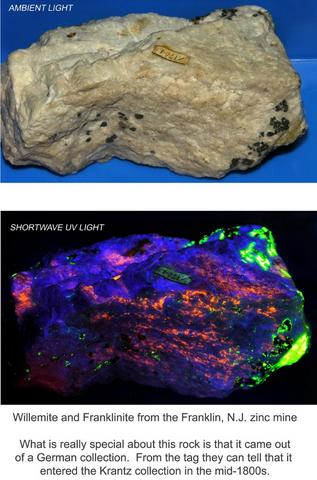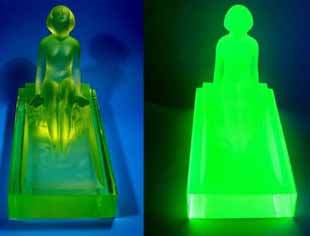Nikon CPU Contacts
I have a couple of old Nikon 35mm film SLRs which are pretty much manual, and two somewhat  newer Nikon film SLRs which automatically adjust shutter speed and aperture and which do perform autofocus. I also have two Nikon digital SLRs. I have a bunch of old and newer Nikkor lenses too, some which are non-CPU and many of which do have CPU contacts.
newer Nikon film SLRs which automatically adjust shutter speed and aperture and which do perform autofocus. I also have two Nikon digital SLRs. I have a bunch of old and newer Nikkor lenses too, some which are non-CPU and many of which do have CPU contacts.
Looking at the cameras the N6006/F601, the N60, and the D40X both have seven internal contacts through which the camera and the lens communicate. The D300 has eight of these internal contacts.
Many of my older CPU lenses have what I call the 4 + 1 format of contacts for a total of five contacts. Some of the newer lenses have seven contacts, and my favorite macro lens has ten contacts! 
I find this both really interesting and a bit confusing, all at the same time. I’m intrigued and I sure wish some technical wizard with Nikon could explain this to me.
-
-
-
-
-
-
-
-
I got an excellent response from Joseph Wisniewski:
-
The five contact interface is actually 7 contacts wide, with a 2 contact gap. 2 contacts are power and ground, three more are a serial data interface (clock, data, and read/write). They do pretty much what Bjorn said, communicate lens data back to the camera, and communicate commands like "start VR" to the lens.
-
The gap is because Nikon originally designed an entirely different AF system for the F3-AF. This system had 7 contacts, and a motor in the lens, and the camera would drive the lens motor through two high power contacts: "near to far" and "far to near". There was no serial communication, just power and limit switches. When Nikon made the new "screwdriver" system for the N2020 camera, they avoided using those two contacts, to keep old F3-AF cameras from frying the new "digital interface" lenses. Nikon F4 (aside from being the ugliest Nikon ever designed) actually had the circuitry to drive either the F3-AF lenses or the new AF Nikkors.
-
AF-S and AF-I lenses need 8 contacts to function properly. They add an additional high power line so that the lens motor could suck power directly from the camera battery. A pair of additional motion detection lines allow the camera to track the direction and speed of lens movement. Nikon "recycled" the contacts from the "gap" in the second AF system. This tracking function is only used by high end bodies like D2X, D3, F100, F5, so those bodies have 8 contacts. Lesser bodies like D100 or N80 have 7 contacts. I don't know about some of the newer low end bodies.
-
Although cameras have 7 or 8 contacts, Nikon AF-S (and older AF-I) lenses have 10 contacts. Two of these are for use with teleconverters. AF-S teleconverters have 10 contacts on the front (lens side), and 8 on the camera side. The two contacts let the converter send a "hi, I'm a 1.4x teleconverter" message to the lens. This allows the lens to send a "I'm not really a 105mm f2.8 macro, I'm really a 147mm f4 macro" to the camera. Even AF-S lenses that aren't normally used with teleconverters, like the 12-24mm f4 DX, have 10 pins, and often work properly on Kenko teleconverters.
-
I'm not sure why a lens would have 7 contacts, unless it's a low end AF-S lens designed only to exploit the features of a low end body, leaving off the motion detection. Which lenses have you seen with 7 contacts.
The contacts are identified in Nikon service manuals (and on the circuit boards of cameras and lenses) as "A" through "J". "A" is the leftmost contact as you gaze lovingly into the lens mount of the camera. The names of the contacts vary depending on what manual you read. E and F are the "gap" contacts in older cameras.The first F3-AF interface:
-
number
F3AF
A
VCC
B
Limit switch
C
Near to Far
D
Far to Near
E
F
Relative Distance
G
GND
-
The second AF interface, as used in 5 contact screwdriver lenses:
number
N50
patent
A
VCC
LCVV
B
RW1
RW1
C
SCK
LCK
D
SIO
LIO
E
F
G
DGND
PGND
-
The third AF interface, as used in cameras that support AF-S lenses:
number
N90, N70
F5
patent
A
LCVV
VCC
LCVV
B
RW1
R/W1
RW1
C
LCK
SCK
LCK
D
LIO
SI/O
LIO
E
RW2
R/W2
RW2
F
LBAT
LBAT
LBAT
G
PGND
GND
PGND
-
The full 10 pins from the 300mm f2.8 AF-I service manual:
number
300mm
protection
A
VCC
cap to PGND
B
R/W1
pull up and series
C
Clock
series
D
DATA
pull up
E
Hotline, Pulse
pull up and series
F
Power for Motor
G
Motor GND
H
Hotline, Pulse
pull up and series
I
Reserve
J
Reserve
Mount
GND
-
-
-
-
-
-
-
-
--















